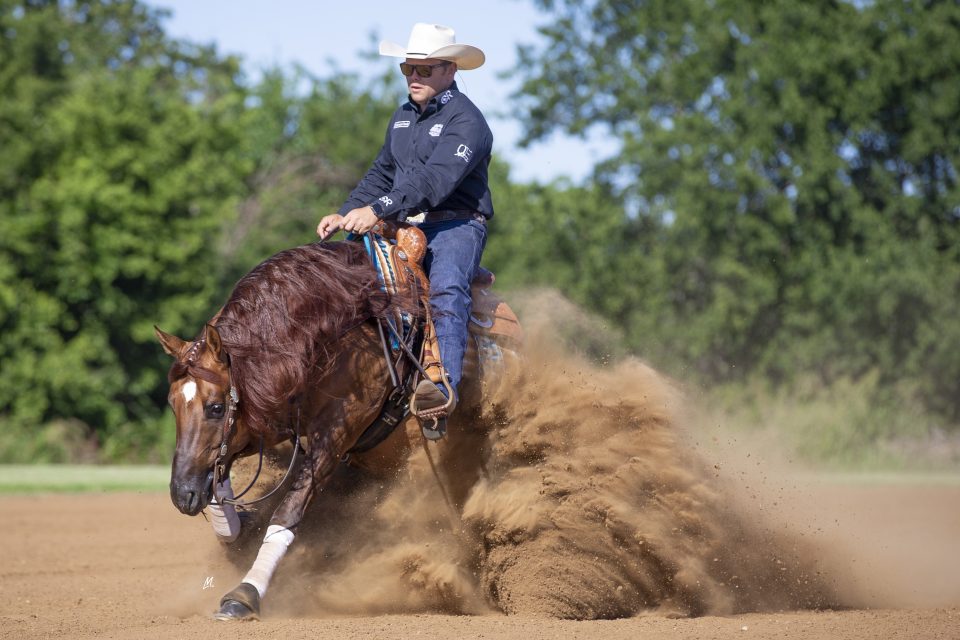Don’t be intimidated by budgeting. Instead, follow these simple steps to determine your needed income from each horse.
By Chad Horkey

Budgeting can be intimidating, but it’s a necessary part of your successful business. To ease any budgeting angst you might have, think of it like training a horse: You have your program that you follow, but you adapt as you go along when conditions change, unexpected obstacles arise, and if a horse progresses faster than you might’ve expected. Your budget follows the same principles in that it’s a guideline for your business, but you must regularly evaluate where you stand and adjust to ensure your success. Here, I’ll discuss some essential budgeting tips.
Flat Rate or Itemized
Past issues of the NRHA Pro Trainer have discussed the pros and cons of billing by line item versus flat-rate billing. Your budget faces the same choice. Breaking down your expenses into buckets is absolutely the way to go to keep your budget in the black.
Why do I recommend this approach? Because it affords you a detailed manner to determine how much you need to charge to meet your financial goals. Additionally, it affords transparency when billing your customers, as you will be able to explain to them the costs that necessitate a fee increase.
Bring on the Budget Buckets
I recommend dividing your expenses into two buckets when building your budget: fixed costs and variable costs.
Fixed costs are your constant expenses that you incur month after month no matter the quantity of goods or services provided. They can be predetermined, set costs such as your mortgage or rent, but also an average you calculate for other bills that arrive monthly, from electricity to water to the WiFi you run to the barn. No matter if you have zero horses in training or 50, these costs are the same. When you come up with this number, you can calculate the fixed costs you need to be charging per stall to your customers.
FORMULA 1: Fixed Cost 1 + Fixed Cost 2 + Fixed Cost 3 = Total Fixed Costs Divided by the Number of Horses in Your Barn = Fixed Cost Per Horse (Note: This does not include your variable costs! Just the basic fixed costs to keep the barn running.)
EXAMPLE: $5,000 Fixed Costs ¸ 20 stalls = $250 of Fixed Costs Per Stall
Variable costs change based on fluctuating circumstances and the quantity of goods and services provided, including the number of horses you have in training (think hay and feed bills) and the number of shows you’re traveling to (think fuel and lodging bills).
FORMULA 2: Variable Cost 1 + Variable Cost 2 + Variable Cost 3 = Total Variable Costs Divided by the Total Number of Horses in Your Barn = Variable Cost Per Horse
FORMULA 3: Fixed Costs + Variable Costs = Total Revenue Needed Per Horse to Cover Costs
Managing Variable Costs
As we’ve all experienced in business, variable costs can jump exponentially overnight. Our hay, grain, fuel and many other associated expenses have increased more than anyone could’ve expected or budgeted. That’s why being nimble is critical for your budget. Knowing your fixed costs keeps one variable relatively under control. Then you can reevaluate your variable costs as needed. The key with variable costs is to look ahead. Will you need to replace your truck’s tires or provide other major maintenance to it in the near future—or maybe even replace it? Try to plan ahead when budgeting and include those anticipated expenses.
Budgeting Revenue
One of the least predictable revenues that can be a major part of your business is horse sales. You can set a goal of how many horses you need to sell and how much commission you need to make, but the bottom line is that can be out of your hands. Do the best you can to predict sales, estimate your commissions over a quarter, and hustle to meet those goals and keep your budget on track.
Lastly, when budgeting and setting your training fees, remember to pay yourself first. Think about your value and what you “bring to the table”. What is your time and expertise in the industry worth? Don’t be afraid to ask around. What do other NRHA Professionals in your area charge for their time? What about other trainers from different disciplines? By paying yourself first, you are making your long-term financial success a priority.
Chad Horkey is a senior director with RSM US LLP and is based out of their Rochester, Minnesota, office. He’s a lifelong horseman and has partnered with the National Snaffle Bit Association to develop the Tomorrow’s Horsemen program to help up-and-coming professional trainers set up their businesses for success.



